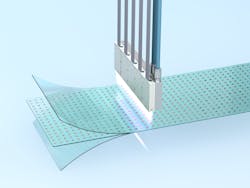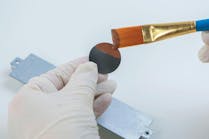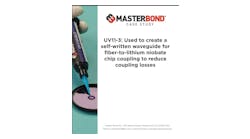Windach, 1 February 2023 | DELO has developed a line lamp for curing adhesives and other multi-functional polymers. DELOLUX 301 is suitable for highly automated processes in small and narrow production lines. The lamp offers highest curing speeds and great flexibility for integration into production lines, like those found in consumer electronics assembly. It can also be used, for example, in the lamination of thin-film solar cells.
With the inclusion of this line lamp to its portfolio, DELO adds another form factor to its wide variety of area and spot lamps. Thanks to its very high intensity of up to 30 W/cm², the DELOLUX 301 not only enables maximum speeds for curing adhesives and other multi-functional polymers, but also allows large working distances of up to 100 mm from lamp to components. The lamp’s compact lamp head dimensions, measuring 42.7 mm x 13 mm x 67.2 mm, contribute to a high degree of flexibility for integration into production systems as well.
The lamp head produces a linear irradiated area of 38.7 mm x 8.45 mm. The DELOLUX 301 can be operated as a single head or be seamlessly combined to form a larger array. When the lamp heads are combined in up to three directions, users can easily implement individual as well as homogeneous exposure geometries. For example, a wide row of lamps can be used for the roll-to-roll lamination process of flexible thin-film solar cells, where adhesives, such as DELO PHOTOBOND LP4115, are often needed to protect cells made of organic materials and perovskite from humidity ingress.
In its standard variant, DELOLUX 301 is available with water cooling with optimized water flow, suitable for clean rooms. The lamp is available with wavelengths of 365 nm, 400 nm and 460 nm, making it suitable for UV-curing as well as light-curing products. Its service life is more than 20,000 hours.
This plug and play lamp head is controlled and supplied with power via the base units of the DELOLUX pilot A series, which are available as touch and PLC-capable models. Both models feature automatic temperature compensation so that the LEDs deliver constant intensity even as they heat up.





